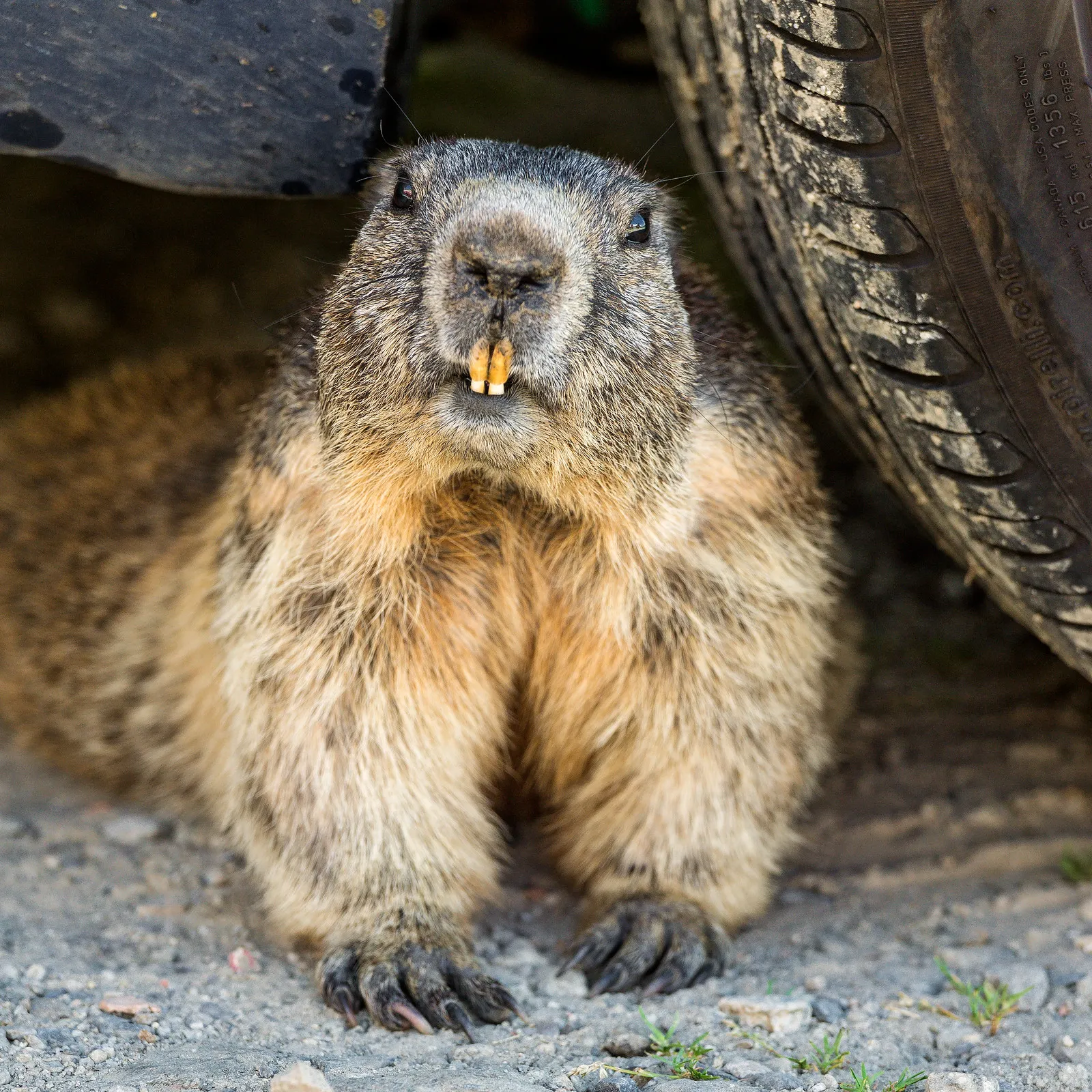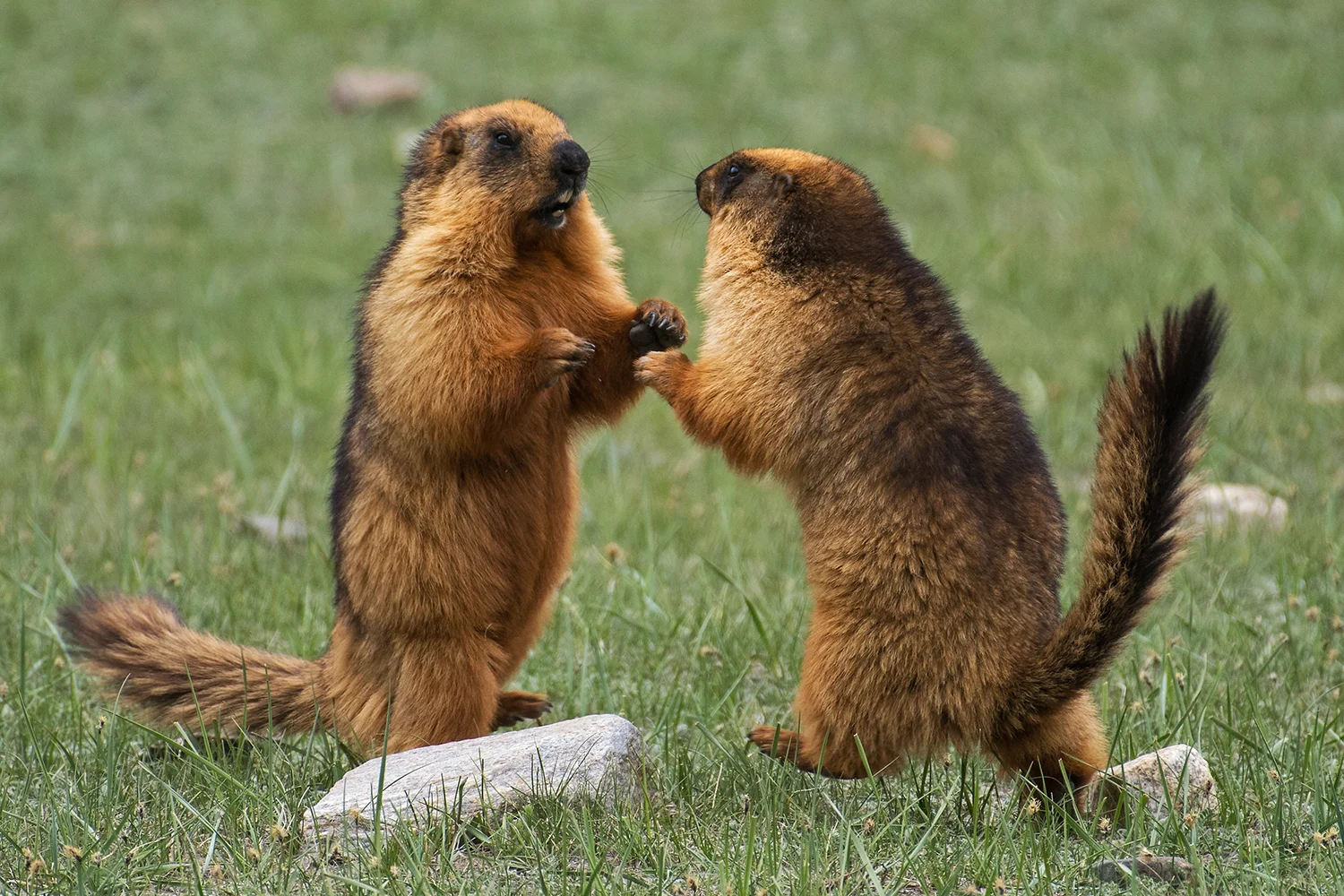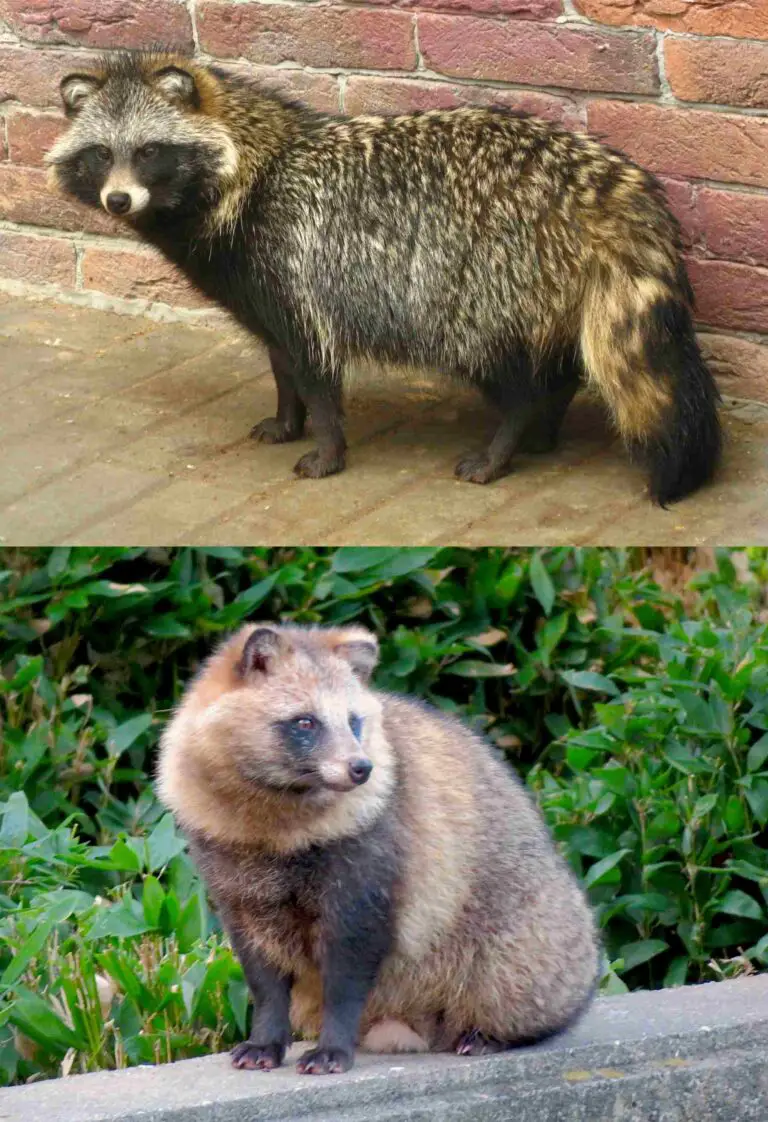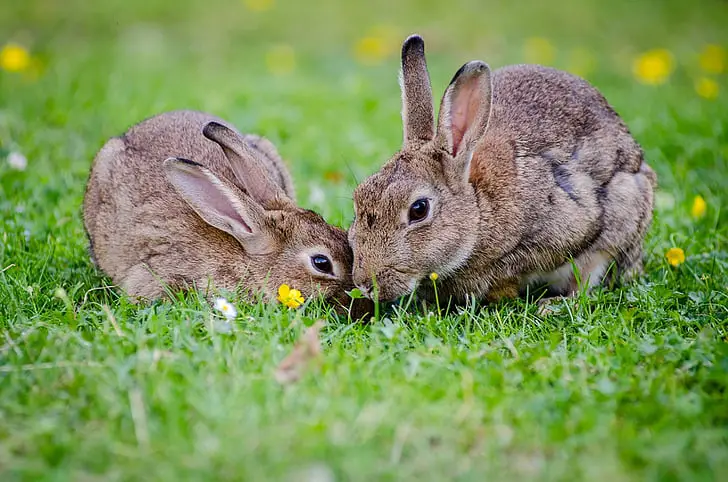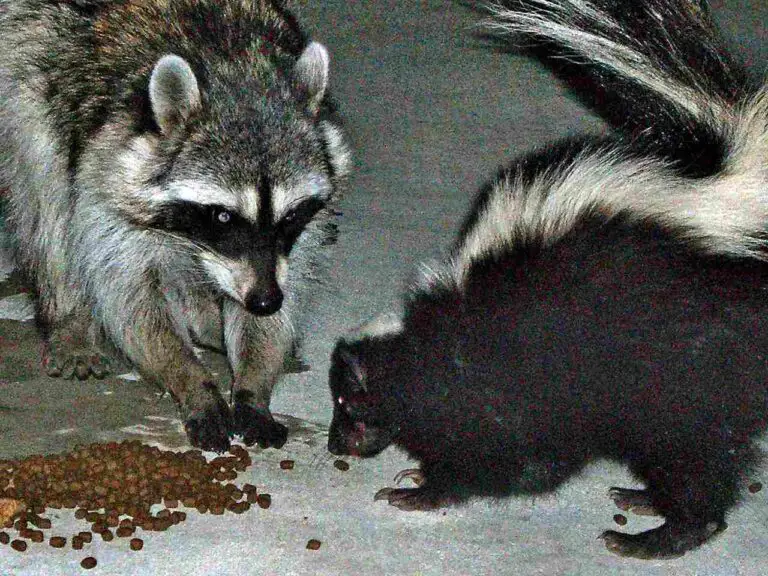Marmot Vs Prairie Dog Size, Weight, Overall Comparison
In the vast expanse of rodent diversity, marmots and prairie dogs emerge as distinctive species, each with its unique characteristics. This exploration aims to uncover the six key differences that set marmots and prairie dogs apart, offering insights into their behaviors, habitats, and physical traits.
I. Size Disparities:
– Marmots, towering over prairie dogs, exhibit a substantial difference in size. Marmots boast an average weight ranging from 3.5 to 24 pounds and measure between 17 and 29 inches. In contrast, prairie dogs are much smaller, typically weighing around 1 kg.
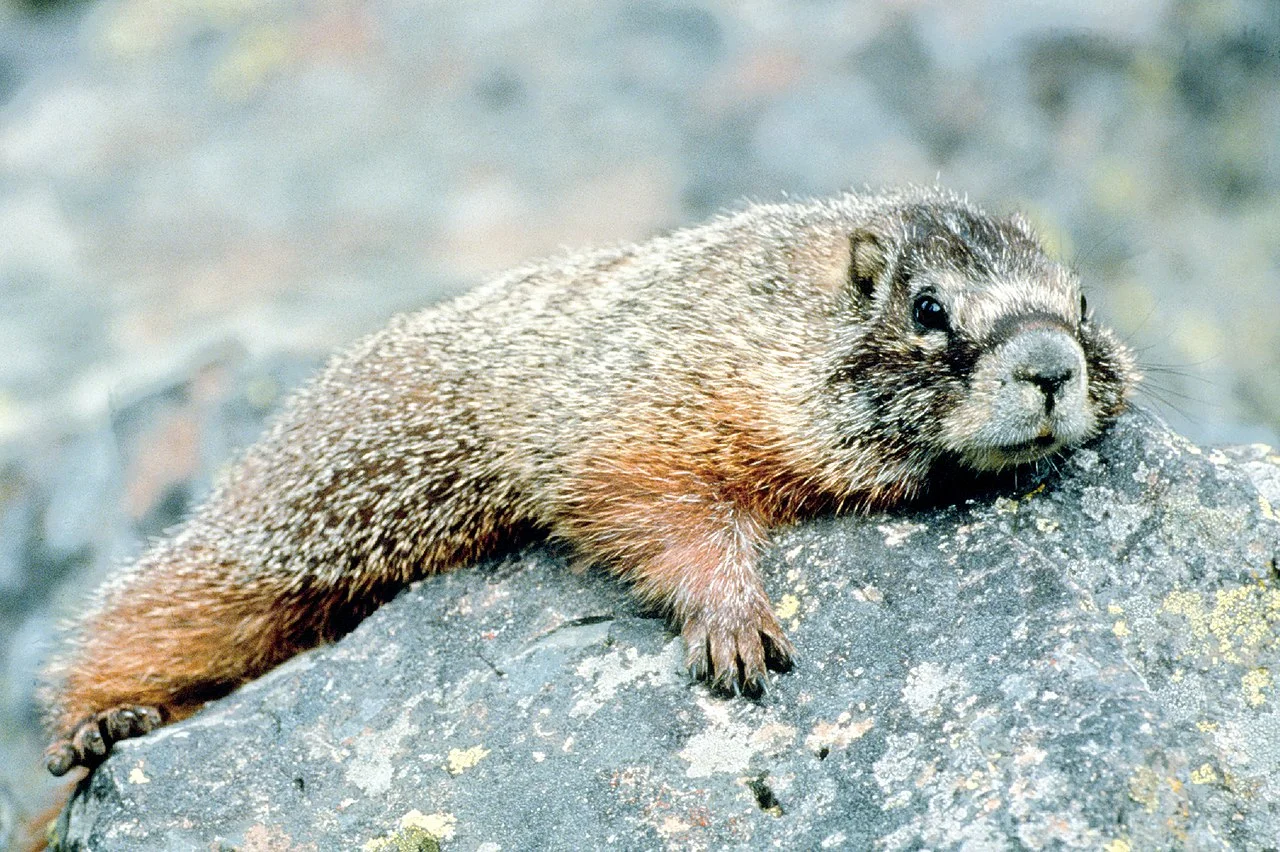
II. Habitat Preferences:
– The divergent habitats preferred by marmots and prairie dogs unveil their distinct ecological niches. Marmots typically dwell in burrows, embracing a more solitary lifestyle, while prairie dogs, social creatures, construct extensive burrow systems in open grasslands.
III. Behavioral Variances:
– Delving into the behavioral differences between marmots and prairie dogs reveals distinct communication methods. When faced with predators, prairie dogs emit barks, while marmots opt for whistling loudly. These unique responses contribute to their survival strategies.
IV. Classification and Relations:
– Although frequently confused, prairie dogs and marmots differ significantly in their classifications. Prairie dogs belong to the squirrel family (Scuiridae), while marmots, classified under the genus Marmota, showcase their own genetic lineage within the rodent world.
V. Burrow Dwellers:
– Both marmots and prairie dogs share a penchant for underground burrows, shaping their habitats and offering protection from predators. This behavior forms a commonality despite their differing social structures.
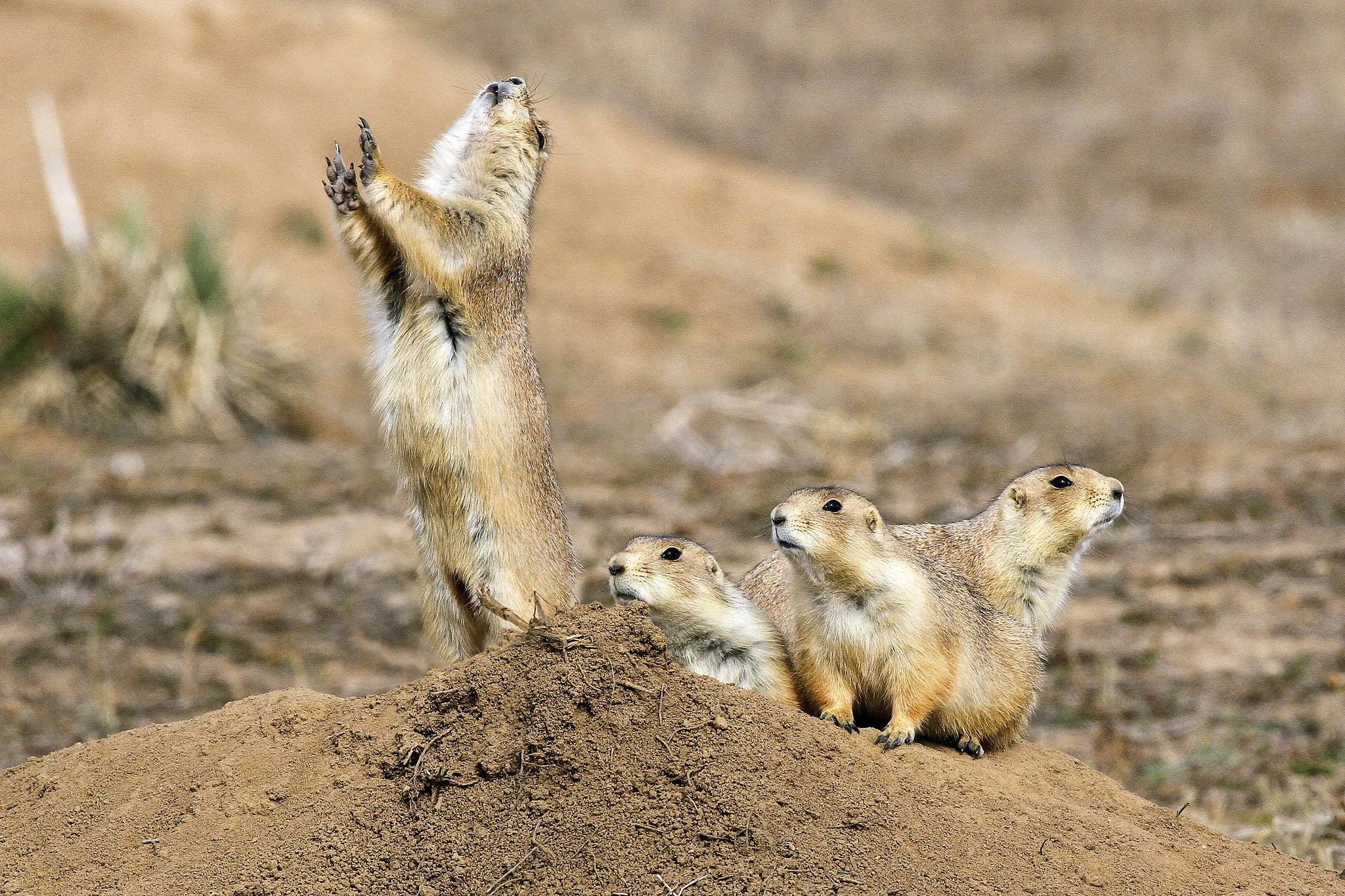
VI. Size and Weight Comparisons:
– Additional details about size and weight comparisons between prairie dogs, marmots, and other related rodents contribute to a comprehensive understanding of their place within the rodent family.
VII. Visual Identification:
– A visual guide, presented through images and videos, aids in the identification of marmots and prairie dogs, allowing enthusiasts and researchers to recognize these rodents in their natural habitats.
VIII. Genetic Distinctions:
– Genetic distinctions elucidate the evolutionary paths of marmots and prairie dogs. Understanding their genetic relations helps appreciate the biodiversity present within the broader rodent category.
*Details of Comparison: Marmot Vs Prairie Dog
| Criteria | Marmot | Prairie Dog |
| Appearance | Robust, short-necked, variable fur color |
Slender, short-tailed, light to reddish-brown fur
|
| Size (inches) | 16-28 | 12-16 |
| Weight (pounds) | 3-11 | 1.5-3 |
| Dentition & Bite Force (PSI) | Powerful incisors, variable PSI |
Sharp incisors, PSI not extensively studied
|
| Offensive Advantages | Adapted for burrowing, sharp claws |
Adapted for burrowing, strong forelimbs
|
| Defensive Advantages | Retreat into burrows |
Communal alarm calls
|
| Speed (mph) | Up to 15 | Around 35 |
| Agility | Moderate agility in rocky terrains |
Highly agile in open grasslands
|
| Senses | Acute senses for predator detection |
Reliance on acute senses
|
| Overall Physical Capacity | Tailored to specific habitats |
Adapted to respective habitats
|
| Habitat Preference | Alpine regions | Grasslands |
| Tracks | Broad and sturdy |
Delicate with claw marks
|
| Lifespan (years) | 4-10 | 3-5 |
| Feeding | Herbivorous, adapting to vegetation availability |
Herbivorous, adapting to available vegetation
|
| Intelligence | Problem-solving abilities |
Complex social structures
|
| Social Behavior | Solitary or small groups |
Highly social in colonies
|
| Reproduction | Sexual reproduction, varying gestation periods |
Sexual reproduction, varying gestation periods
|
| Parental Behavior | Female care, teaching survival skills |
Cooperative breeding, shared responsibilities
|
| Human Proximity | Adaptable to human-altered landscapes |
Adaptable to human-altered landscapes
|
| Behavior Toward Humans | Generally shy |
Varied responses
|
| Danger to Humans | Minimal danger | Minimal danger |
| Precautions | Caution to avoid disturbance |
Awareness of disease transmission
|
| Conservation Status | Varied statuses | Varied statuses |
Key Points
- Both species exhibit adaptations for burrowing life.
- Prairie dogs display more intricate social structures.
- Differences in habitat preference influence their respective ecosystems.
- Both species play crucial roles in biodiversity and ecosystem dynamics.
- Conservation efforts are vital for maintaining healthy populations.
1. Taxonomy:
Marmot:
Family: Sciuridae
Subfamily: Sciurinae
Genus: Marmota
Species: Varies (e.g., Marmota monax – groundhog, Marmota flaviventris – yellow-bellied marmot)
Prairie Dog:
Family: Sciuridae
Subfamily: Sciurinae
Genus: Cynomys
Species: Varies (e.g., Cynomys ludovicianus – black-tailed prairie dog, Cynomys gunnisoni – Gunnison’s prairie dog)
2. Appearance:

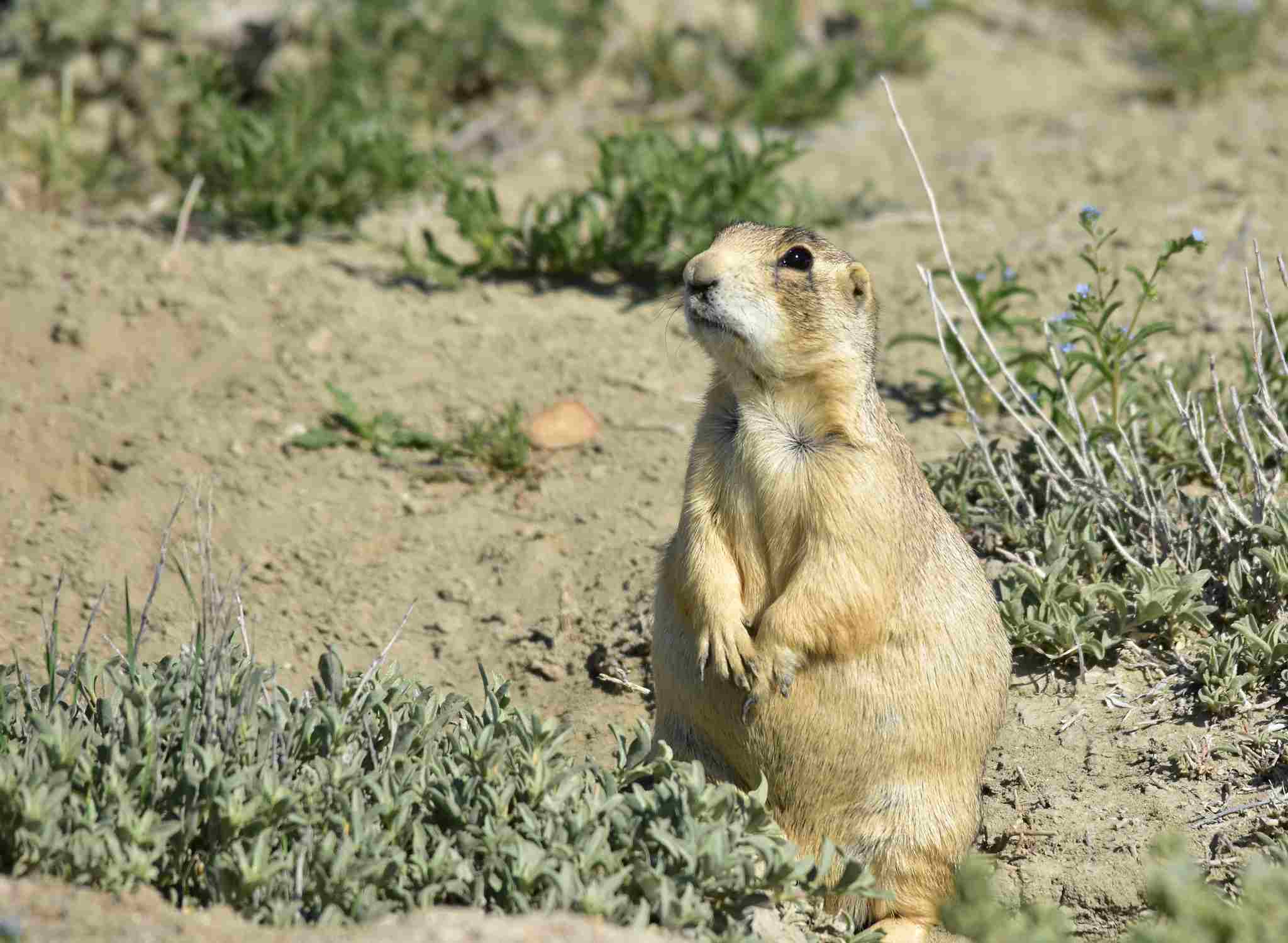
Marmot:
Robust, stocky build with a short neck.
Fur color varies among species, commonly brown or gray.
Prominent incisors and small ears.
Prairie Dog:
Slender, elongated body with a distinctive short tail.
Fur color ranges from light brown to reddish-brown.
Pronounced cheek pouches for food storage.
Comparison:
Both exhibit adaptations for burrowing life but differ in body proportions.
Ecological Implications:
Camouflage helps marmots evade predators in mountainous habitats.
Prairie dogs’ alert appearance aids in communal predator detection.
3. Size:
Marmot:
Varies by species, typically 16 to 28 inches in length.
Prairie Dog:
Ranges from 12 to 16 inches in length.
Comparison:
Marmots generally larger, adapting to different habitats.
Ecological Implications:
Larger size in marmots may provide advantages in colder environments.
4. Weight:
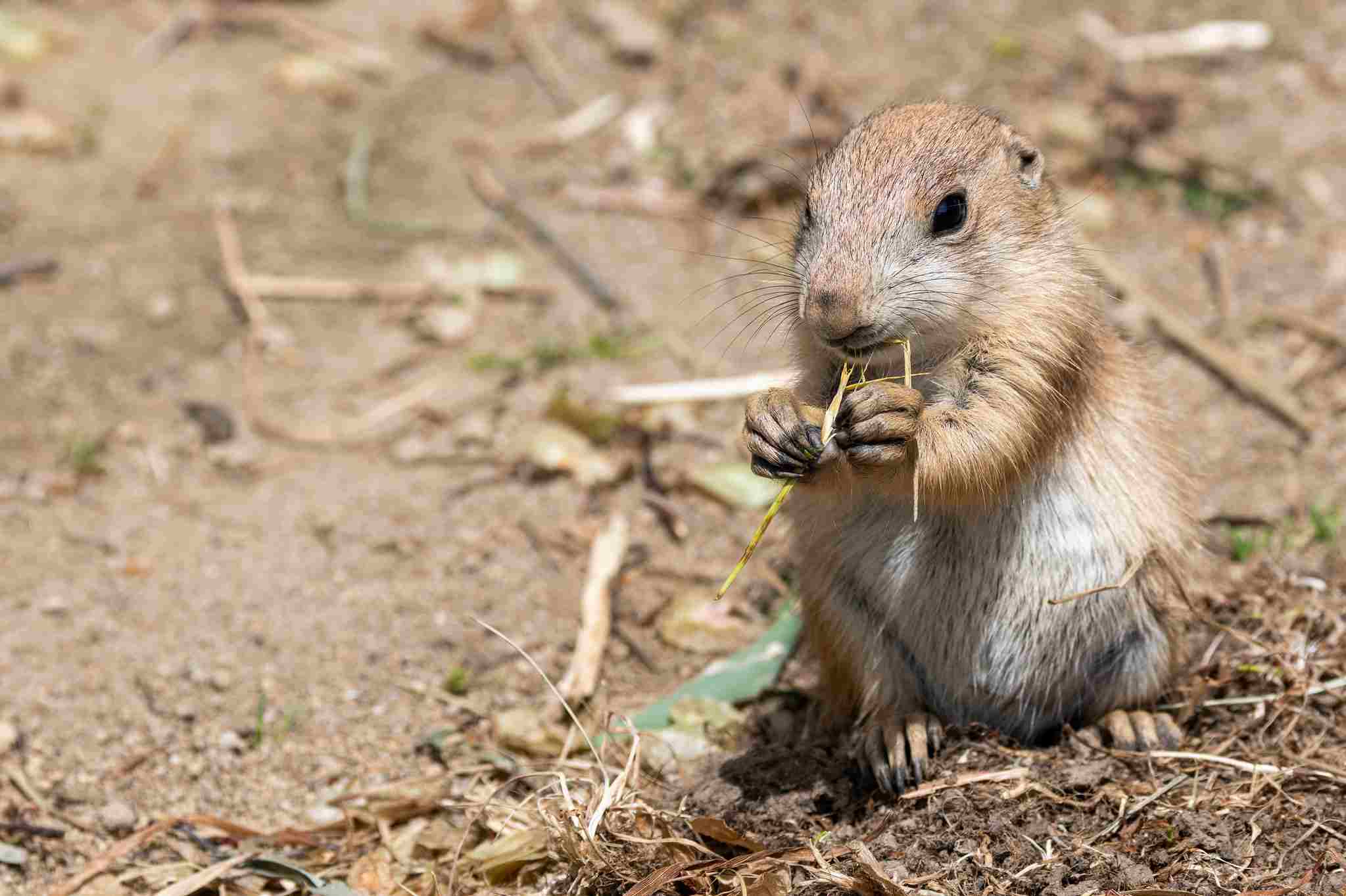
Marmot:
Weights vary significantly among species, ranging from 3 to 11 pounds.
Prairie Dog:
Typically weighs 1.5 to 3 pounds.
Comparison:
Marmots exhibit greater weight diversity due to varied habitats.
Ecological Implications:
Weight influences energy storage and hibernation patterns in marmots.
5. Dentition and Bite Force (PSI):
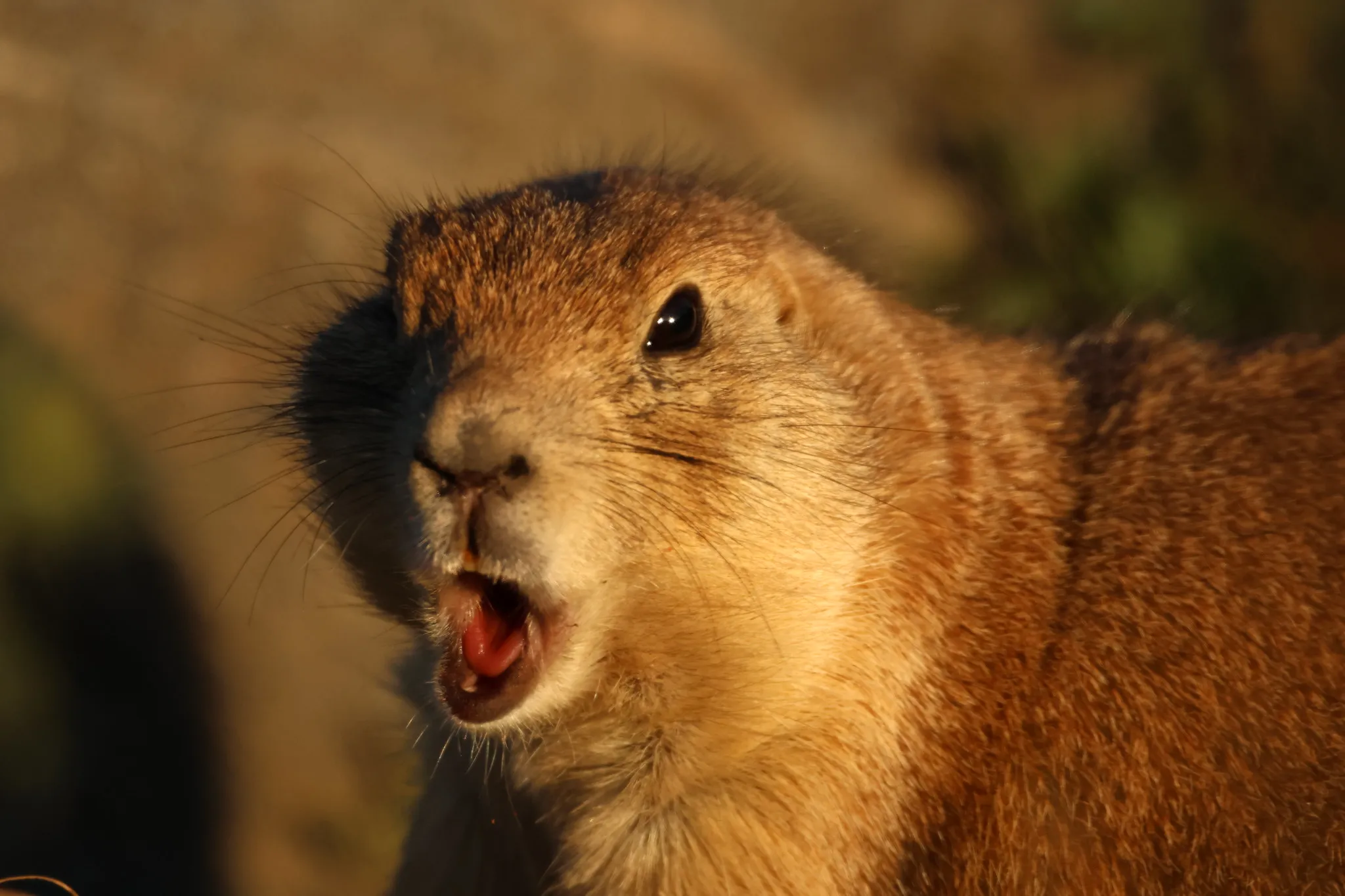
Marmot:
Powerful incisors for cutting vegetation.
Bite force: PSI varies among species, generally not well-documented.
Prairie Dog:
Sharp incisors adapted for cutting grasses and foraging.
Bite force: PSI not extensively studied.
Comparison:
Both species have adapted teeth for herbivorous diets.
Ecological Implications:
Dental adaptations facilitate efficient consumption of available vegetation.
6. Physical Offensive Advantages:
Marmot:
Sharp claws aid in digging burrows and foraging.
Prairie Dog:
Sharp incisors and strong forelimbs for digging and constructing burrows.
Comparison:
Both possess adaptations for burrowing, providing defensive and offensive advantages.
Ecological Implications:
Efficient burrowing contributes to habitat modification and soil structure.
7. Physical Defensive Advantages:

Marmot:
Alertness and agility enable quick retreat into burrows.
Prairie Dog:
Ability to sound alarms and retreat quickly into burrows.
Comparison:
Both rely on burrows for defense, but prairie dogs are known for communal alarm calls.
Ecological Implications:
Altruistic behaviors enhance predator avoidance in prairie dog colonies.
8. Speed (Km/hour or Mile/hour):
Marmot:
Can reach speeds of up to 15 mph (24 km/h).
Prairie Dog:
Capable of running at speeds around 35 mph (56 km/h).
Comparison:
Prairie dogs exhibit faster speeds, possibly due to their open grassland habitats.
Ecological Implications:
Speed is crucial for escaping predators in open environments for prairie dogs.
9. Agility:
Marmot:
Moderately agile, adapted for navigating rocky terrains.
Prairie Dog:
Highly agile, capable of swift movements in open grasslands.
Comparison:
Prairie dogs showcase greater agility, beneficial in their expansive habitats.
Ecological Implications:
Agility aids in avoiding predators and navigating diverse landscapes for both species.
10. Senses:
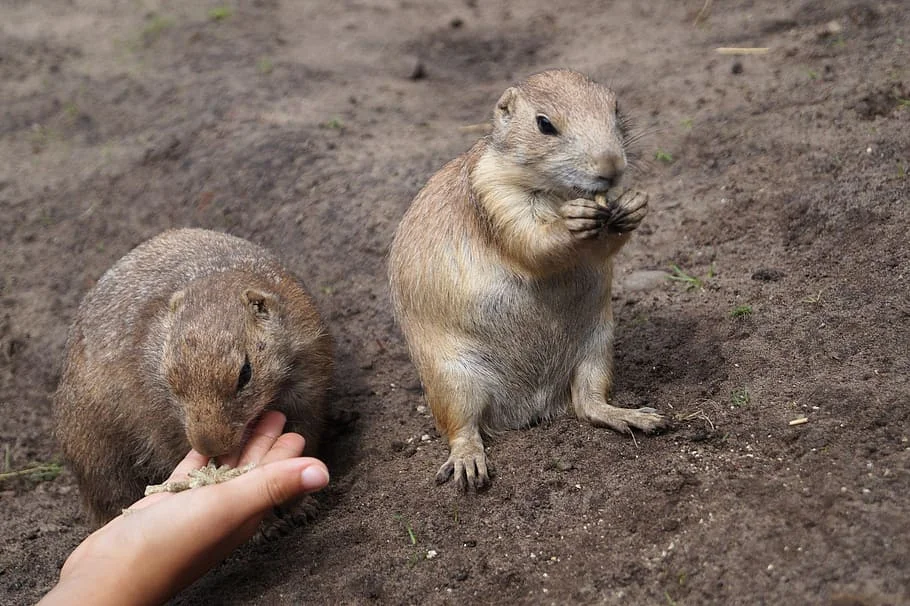
Marmot:
Well-developed sense of smell and hearing.
Moderate vision.
Prairie Dog:
Excellent sense of hearing and vision.
Sensitive to vibrations for detecting ground predators.
Comparison:
Both rely on acute senses for predator detection.
Ecological Implications:
Enhanced senses contribute to predator avoidance and communal defense.
11. Overall Physical Capacity:
Marmot:
Robust physique adapted to mountainous terrains.
Prairie Dog:
Agile body designed for rapid movements in open grasslands.
Comparison:
Physical capacities tailored to specific habitats, optimizing survival.
Ecological Implications:
Adaptations ensure efficiency in resource acquisition and predator evasion.
12. Habitat Preference(s) and Geographic Region:
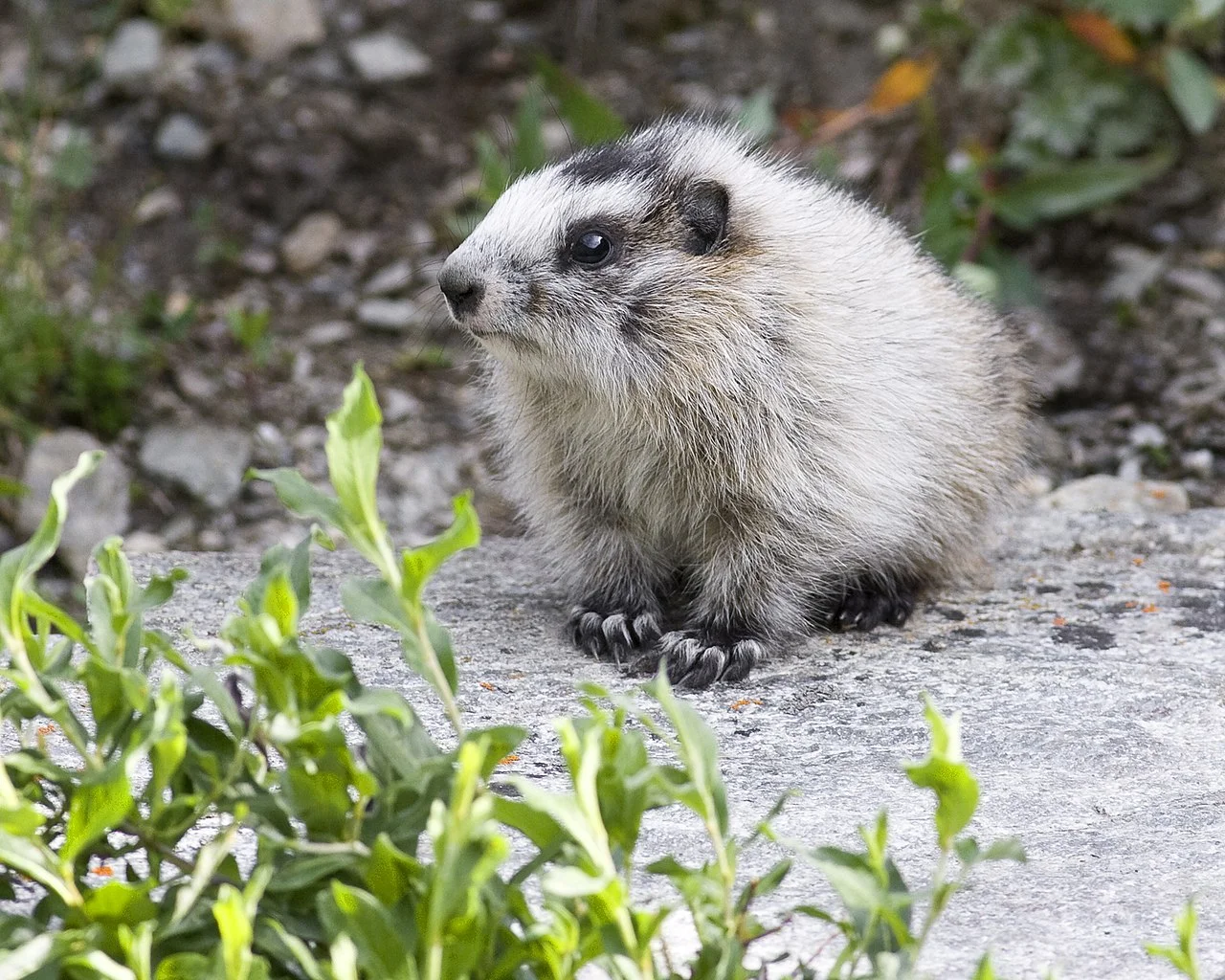
Marmot:
Alpine and subalpine regions, preferring rocky landscapes.
Prairie Dog:
Grasslands, preferring open areas with short vegetation.
Comparison:
Distinct habitat preferences reflecting different ecosystems.
Ecological Implications:
Influence on local biodiversity and ecosystem dynamics.
13. Tracks:
Marmot:
Broad, sturdy tracks reflecting their mountainous habitat.
Prairie Dog:
Delicate tracks with distinctive claw marks, characteristic of open grasslands.
Comparison:
Tracks mirror habitat features and locomotion requirements.
Ecological Implications:
Tracking studies aid in understanding movement patterns and habitat use.
14. Lifespan:
Marmot:
Lifespan varies by species, typically 4 to 10 years.
Prairie Dog:
Average lifespan ranges from 3 to 5 years.
Comparison:
Lifespan influenced by factors like predation risk and habitat.
Ecological Implications:
Lifespan impacts population dynamics and reproductive strategies.
15. Mode of Feeding:

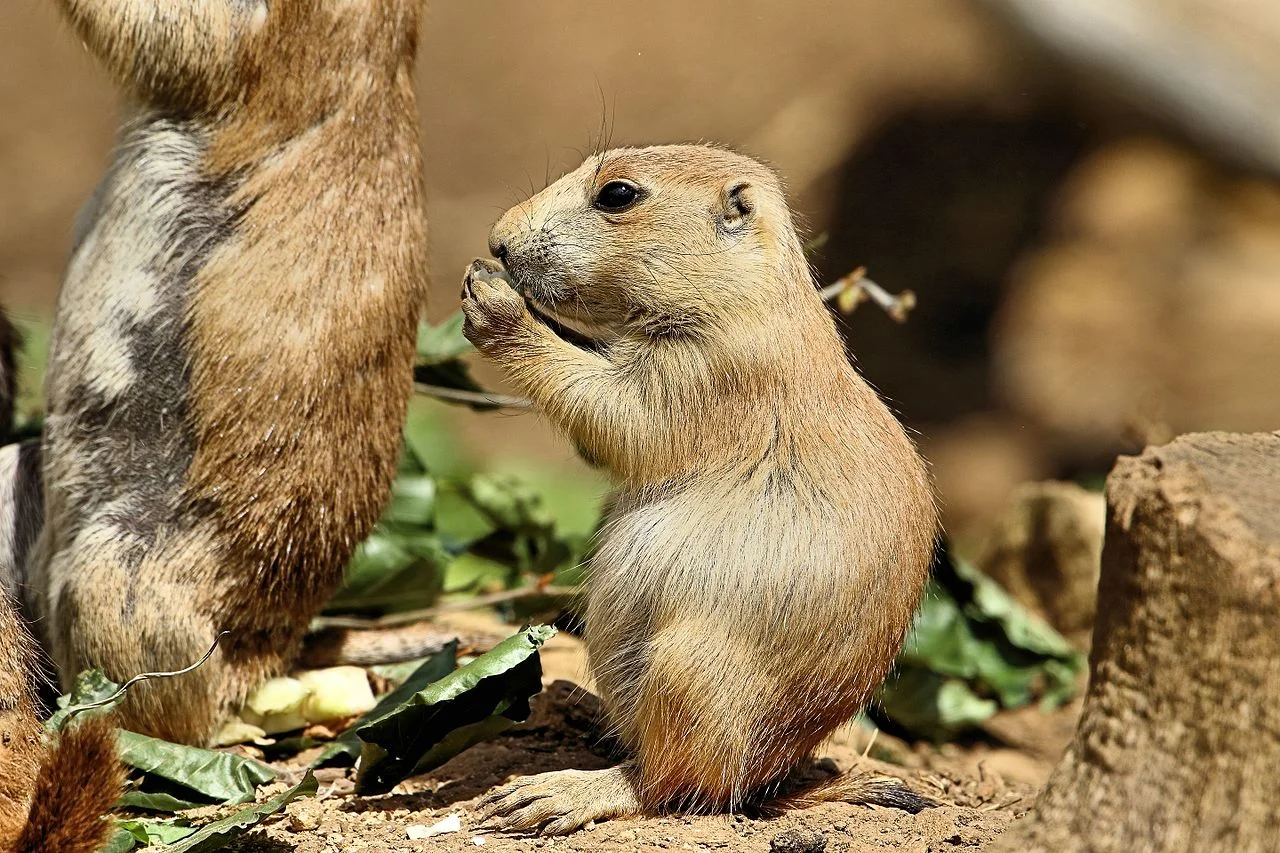
Marmot:
Herbivorous diet, primarily feeding on grasses, herbs, and shrubs.
Prairie Dog:
Herbivorous, feeding on grasses, seeds, and occasionally insects.
Comparison:
Similarities in herbivorous diets, adapting to available vegetation.
Ecological Implications:
Herbivory influences vegetation structure, affecting the broader ecosystem.
16. Intelligence:
Marmot:
Exhibit problem-solving abilities, especially in burrow construction.
Prairie Dog:
Known for complex social structures, indicating higher intelligence.
Comparison:
Prairie dogs demonstrate a more intricate social intelligence.
Ecological Implications:
Social intelligence enhances communal defense and resource utilization.
17. Social Behavior:
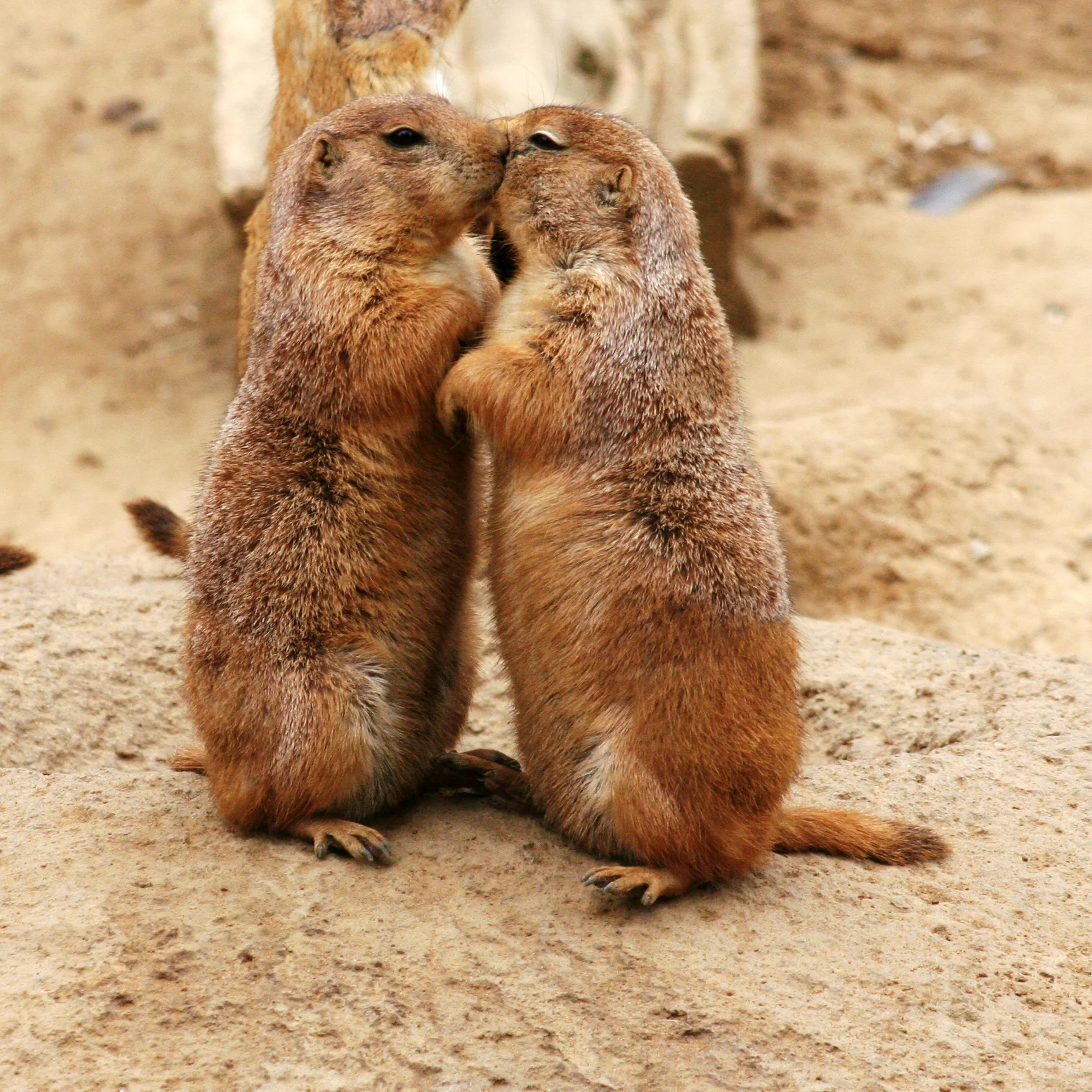
Marmot:
Solitary or form small family groups.
Prairie Dog:
Highly social, living in colonies with complex communication.
Comparison:
Prairie dogs showcase more elaborate social structures.
Ecological Implications:
Social structures impact resource sharing, predator defense, and overall population dynamics.
18. Mode of Reproduction:
Marmot:
Generally, sexually reproducing with a gestation period of around 25 to 35 days.
Prairie Dog:
Sexual reproduction, with a gestation period of about 34 days.
Comparison:
Both species employ sexual reproduction strategies.
Ecological Implications:
Reproductive strategies influence population growth and dynamics.
19. Parental Behavior:
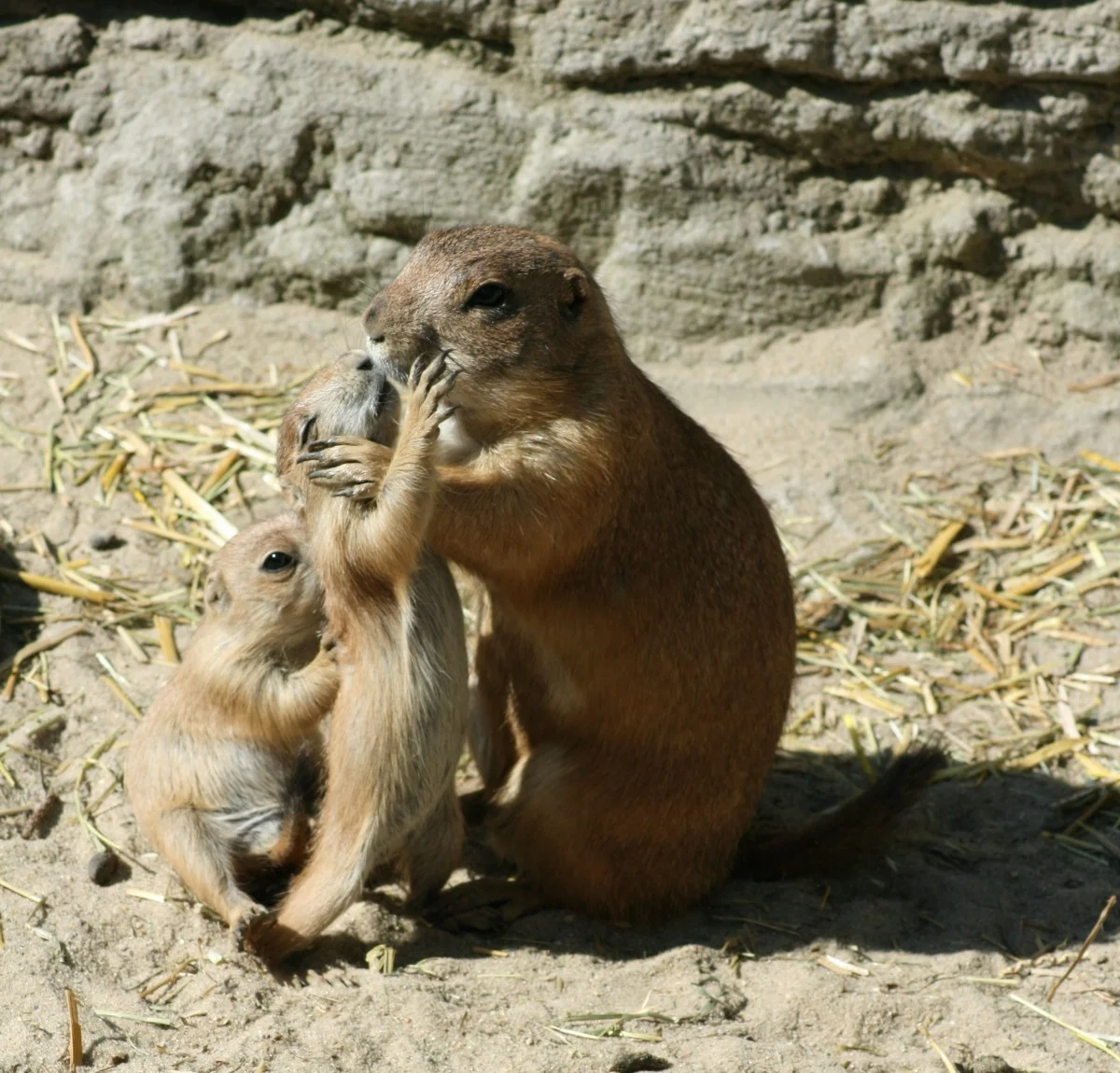
Marmot:
Females care for offspring; parental care involves teaching survival skills.
Prairie Dog:
Cooperative breeding with shared responsibilities among colony members.
Comparison:
Prairie dogs exhibit more communal parenting.
Ecological Implications:
Parental strategies impact juvenile survival rates and colony dynamics.
20. Proximity to Human-Inhabited Areas:
Marmot:
Some species may inhabit mountainous regions near human settlements.
Prairie Dog:
Colonies often found in grasslands near agricultural areas.
Comparison:
Both species can adapt to human-altered landscapes.
Ecological Implications:
Human proximity may lead to habitat modification and potential conflicts.
21. Behavior Toward Humans:
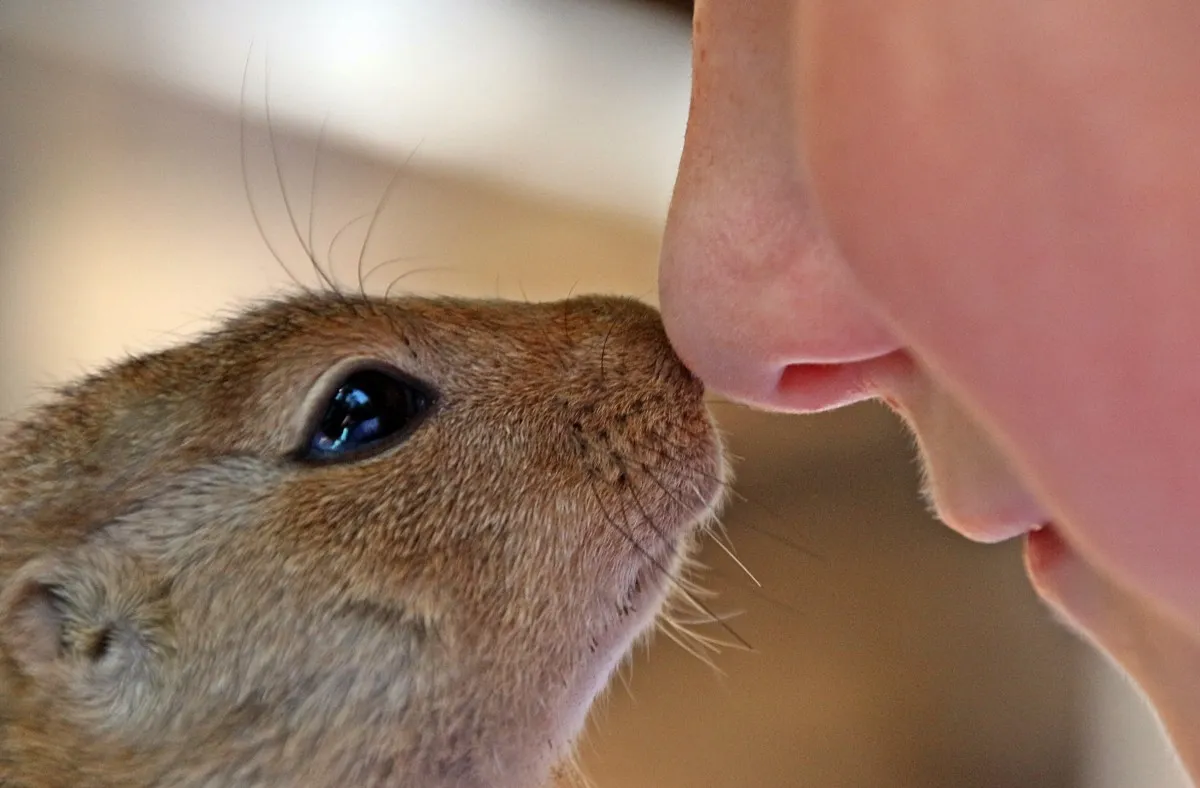
Marmot:
Generally shy and may retreat when approached by humans.
Prairie Dog:
Varied responses; some may exhibit curiosity, while others may be cautious.
Comparison:
Responses influenced by individual and colony experiences.
Ecological Implications:
Human interactions may impact stress levels and habitat use patterns.
22. Danger Posed to Humans:
Marmot:
Typically pose minimal danger; may defend themselves if provoked.
Prairie Dog:
Generally not considered dangerous to humans; may bite if threatened.
Comparison:
Both species exhibit defensive behaviors rather than aggression.
Ecological Implications:
Limited danger to humans reduces the likelihood of conflicts.
23. Associated Precautions:
Marmot:
Caution advised to avoid disturbing natural behaviors or habitats.
Prairie Dog:
Awareness of potential diseases transmitted to humans from prairie dogs.
Comparison:
Human interactions should prioritize respect for wildlife and disease prevention.
Ecological Implications:
Conservation efforts should consider minimizing human impact.
24. Conservation Status:
Marmot:
Varied conservation statuses; some species are of least concern, while others are vulnerable or endangered.
Prairie Dog:
Conservation status varies by species; some are of least concern, while others face threats.
Comparison:
Conservation statuses depend on specific species and regional factors.
Ecological Implications:
Conservation efforts are crucial to maintaining biodiversity in their respective ecosystems.
*Summary of Comparison
Appearance:
Marmot: Robust, short-necked, variable fur color.
Prairie Dog: Slender, short-tailed, light to reddish-brown fur.
Size:
Marmot: 16-28 inches.
Prairie Dog: 12-16 inches.
Weight:
Marmot: 3-11 pounds.
Prairie Dog: 1.5-3 pounds.
Dentition and Bite Force (PSI):
Marmot: Powerful incisors, variable PSI.
Prairie Dog: Sharp incisors, PSI not extensively studied.
Physical Offensive Advantages:
Both adapted for burrowing; marmots with sharp claws, prairie dogs with strong forelimbs.
Physical Defensive Advantages:
Marmots retreat into burrows; prairie dogs use communal alarm calls.
Speed:
Marmot: Up to 15 mph.
Prairie Dog: Around 35 mph.
Agility:
Marmots moderately agile in rocky terrains; prairie dogs highly agile in open grasslands.
Senses:
Both rely on acute senses for predator detection.
Overall Physical Capacity:
Tailored to specific habitats for both species.
Habitat Preference(s) and Geographic Region:
Marmots prefer alpine regions; prairie dogs prefer grasslands.
Tracks:
Marmot tracks broad and sturdy; prairie dog tracks delicate with claw marks.
Lifespan:
Marmot: 4-10 years.
Prairie Dog: 3-5 years.
Mode of Feeding:
Both herbivorous, adapting to available vegetation.
Intelligence:
Marmots exhibit problem-solving; prairie dogs display complex social structures.
Social Behavior:
Marmots solitary or form small groups; prairie dogs highly social in colonies.
Mode of Reproduction:
Both sexually reproducing with varying gestation periods.
Parental Behavior:
Marmots exhibit female care; prairie dogs engage in cooperative breeding.
Proximity to Human-Inhabited Areas:
Both can adapt to human-altered landscapes.
Behavior Toward Humans:
Marmots generally shy; prairie dogs show varied responses.
Danger Posed to Humans:
Minimal danger from both species.
Associated Precautions:
Caution advised for both to avoid disturbance and disease transmission.
Conservation Status:
Varied conservation statuses for different species in both marmots and prairie dogs.
Conclusion
Both marmots and prairie dogs play vital roles in their ecosystems, contributing to biodiversity and ecosystem dynamics.
I). Similarities:
Herbivorous diets, adaptations for burrowing, and reliance on acute senses for survival.
II). Differences:
Varied social structures, habitat preferences, and conservation statuses highlight their ecological uniqueness.
